Fifteenth #14: On Hard Graft
A visit to an exhibition on how work affects our health and bodies
The effects on the marginalised who work in Plantations, Streets, and the Home — past and present — raising searching questions about how work is changing in a technologically mediated future
📖 You can buy books mentioned in this newsletter from my page on Bookshop.org
🔐 No paywall this month (again!) because this essay is about a free exhibition
🦑 Last orders! I will be speaking at Research by the Sea in Brighton on Thursday 27th February 2025. My talk is called “The Spirit of Bartleby: In defence of refusal” and it will be the subject of my essay next month. Last few tickets remain. You can use my code JOINMICHAEL at checkout to get a 20% discount.

In my previous newsletter, I reviewed Code Dependent by Madhumita Murgia (Picador, 2024). I was struck by the author’s prevailing concern with interrogating how AI governs workers and the management of their work.
I want to follow my review by examining what work means in digital service economies. We are the beneficiaries of workplace protections that safeguard our bodies, but the expansion and virtualisation of technologically mediated service work has complicated where work is done — in high and low-income countries alike — and I think that deserves attention.
As tech workers, we are more likely to routinely use a mouse rather than a mallet, so it is unlikely we will be subject to bodily harm. Technologically mediated work is becoming increasingly precaritised, due to borderless workforces competing for work in response to algorithmically driven demand, or as a result of working under automated management. Such scenarios increase psychological harm from perceived or actual loss of agency, or lingering fears of being surveilled at work.
Hard Graft
Hard Graft: Work, Health and Rights is a free exhibition at The Wellcome Collection in London until Sunday 27 April 2025. The exhibition is a sobering examination of “the profound impact of physical work on health and the body”. Its scope transcends the past and present to trace the work done by marginalised people across three locations: Plantation, Street, and Home.
In this essay, I will look at what work means in the twenty-first century. I want to consider the situation of marginalised people — and more often, marginalised women — who are required to sacrifice the well-being of their minds and bodies to keep our service economies going.
I am using this essay to reflect on my several visits to Hard Graft during these unending winter months. If you live outside of London, this account will hopefully give you a vivid sense of the exhibition’s message.
Plantation
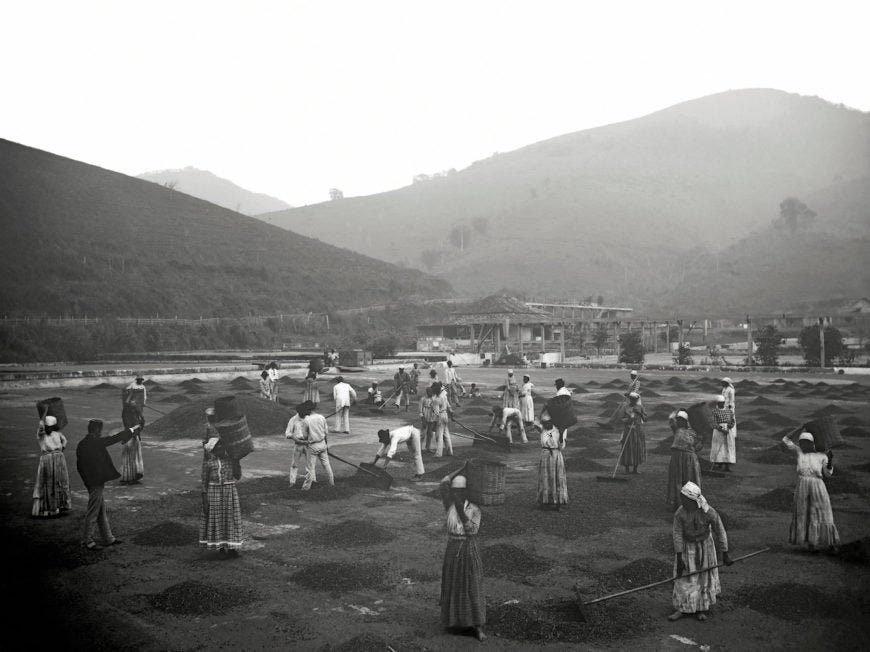
We gaze out across the vista. Rolling hills form a hazy line in the distance. The field is punctuated with figures studiously at work. Men and women in light cotton blouses. Order is implied — by the geometric arrangement of figures, by the neat pyramids of coffee beans sorted in front of each worker, by the authority communicated through the body language of the only figure wearing a dark blazer.
The scene appears calm, but photos conceal truth. What kind of sustained violence must have been inflicted or threatened to ensure such a large group of enslaved people toiled without a murmur?
This is a plantation. Brazil was one of the later major industrialised nations to abolish chattel slavery. Its existence testifies to the sustained violence required to produce goods we take for granted today. Coffee, sugar. Every one of these people held against their will. No doubt most would have died within a few years of this photo being taken. Whatever little care was offered was in pursuit of keeping the workers productive. Each was a human resource.
The first section of Hard Graft confronts us with hard truths. There is an infernal logic tied up in the economics of plantations. Scale, suppression, and efficiency are organising principles that grandfather our capitalist societies, and directly shape the modes of innovative technological production today. Constructing a plantation requires large tracts of land. In the colonial mind, these lands were terra nullius available for parcelling into territories. Vast swathes flattened so that single cash crops could be raised. Producing goods requires labour. For the back-breaking work this involves, such labour is forced onto the bodies of the enslaved who were held against their will.
Exploitation is not confined to the past. We progress through this section to be confronted with contemporary examples of how captive labour continues. We read accounts of American women in prison for homicide — many in prison for life. Each woman photographed is part of a project by Sara Bennett who wants to ask us with these photos: “What do we do with a redeemed life?”. Each photo is accompanied by a handwritten message by each woman reflecting on their current situation.
We may associate prison labour with America, but they are not alone. Today, it is common for prisoners to be required to work in prison for the benefit of an external corporation. From manufacturing to customer services, we are directed to look critically at a carceral system that disproportionately over polices, targets and imprisons Black and Latino people while justifying penal servitude as a vehicle to enrich corporations with their labour.
Interlude: Forensic Architecture
On show at Hard Graft is a 35 minute documentary, If toxic air is a monument to slavery, how do we take it down?, produced by the research agency Forensic Architecture. Echoing the metaphors from In the Wake by Christina Sharpe — a scholar who has done so much contextualise how the traumas experienced by the enslaved reverberate into the present: across oceans, lands, into the air and our beings.
“In the wake, the semiotics of the slave ship continue: from the forced movements of the enslaved to the forced movements of the migrant and the refugee, to the regulation of Black people in North American streets and neighborhoods, to those ongoing crossings of and drownings in the Mediterranean Sea, to the brutal colonial reimaginings of the slave ship and the ark; to the reappearances of the slave ship in everyday life in the form of the prison, the camp, and the school… As we go about wake work, we must think through containment, regulation, punishment, capture, and captivity and the ways the manifold representations of blackness become the symbol, par excellence, for the less-than-human being condemned to death… At stake is not recognizing antiblackness as total climate” — In the Wake: On Blackness and Being, pg. 23
If toxic air… is a documentary that excavates the ecological and industrial legacies of post-colonial industrialisation.
The emergence of environmental racism has been catastrophic to the small majority-Black communities along the river, nicknamed Death Alley. The residents are relentlessly engulfed with toxic clouds spewing from surrounding factories. They continue to fight against each factory’s expansion. Each incursion destroying the vanishing few unmarked burial grounds of the enslaved — their ancestors.
The refrain from Christina Sharpe rings through the air: “Antiblackness as total climate”.
Street

Now we are in the second section of Hard Graft and the mood changes. We are in a bustling street scene. What does it mean to routinely work outside and in public?
Many of us are privileged to have a job that requires occasional attendance in an office, so we may have never seriously pondered an answer to this question. Regardless of the weather or how we feel, we can do our work and achieve consistent results. Our income is fixed and guaranteed.
For countries far in the northern hemisphere, we tend not to linger on the streets. Sometimes our circumstances direct our choices and the only option may be to seek work on the streets. It is then that vulnerability and exposure is felt.
We are introduced to sanitation workers in Mexico City whose work supports the municipal employees to collect household waste. As informally engaged workers, they do not get protective clothing or employment benefits. They rely on tips from residents for their efforts. Sickness and injury are constant worries as they are frequently exposed to hazardous chemicals, discarded needles, and worse.
Working alone on the streets leaves workers exposed — as we see from testimonials of sex workers in the UK. There are many contradictions in the law about sex work with which Hard Graft confronts us: “it is not illegal to buy or sell sex in the UK, but peripheral activities such as kerb-crawling, managing sex work and soliciting in a public place are criminalised” — a bifurcated attitude echoed in the way tech companies behave and their attitudes towards hosting sexual content. Many tech platforms are quick to close down accounts they suspect of being run or owned by individual sex workers while accepting the financial benefits of monetising the hosting of sexual content made by production companies.
With the arrival of takeaway delivery apps, the technology industry has increasingly used its platform position to mediate the provision and demand for labour. If you live in a major city, you would have no doubt been passed by scores of couriers — engaged as gig economy workers — rushing towards their next drop.
“Contrary to this way of thinking, how 'hard' a person works and how much they contribute to any economy does not directly correlate to how comfortable their life is… This learnt obsession with labour and toil, and quietly making the most of the hand you are dealt is what makes the idea that migrant communities need to 'work hard' to have their humanity recognised such a delicious confection for the British palate.” — Border Nation, pg. 73
Incremental tweaks to algorithmic management has driven down the cost of labour for thousands of riders and drivers while limiting the spaces where they can take a few moments to rest before picking up their next orders. Working under the gaze of digitally mediated platforms lures workers in with the promise of freelancing and economic freedom. The prosaic reality is one of precarious work, limited employee protection, and unpredictable restrictions in achieving a stable income.
Interlude: No Knots, Only Loops
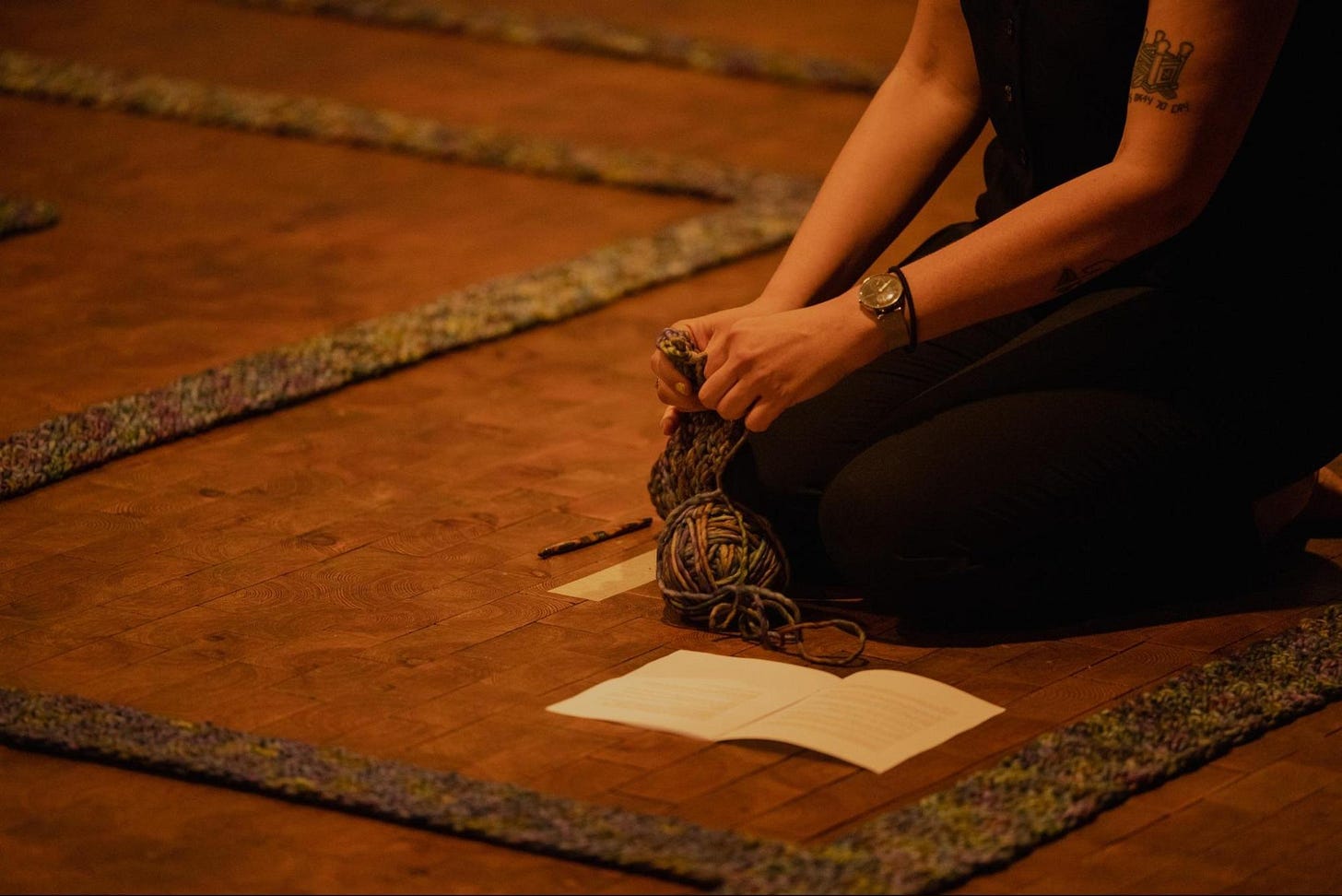
In “No Knots, Only Loops” the artist Sarah Ciston makes the invisible visible. Their project asks searching questions about the nature of digital labour supply-chains that uphold the facade of AI automation fuelling the magical thinking gripping the tech industry.
Although their project is not part of Hard Graft, I want to spend a moment considering this vast and intricately knitted crochet sculpture of over 64 square metres. The channels between the knitted walls form a maze that visitors can explore. As each visitor meanders, they learn that each path has been knitted by hand — the product of many hours of labour. Ciston asks of us, that:
“… rather than hiding human traces, these gestures reveal experiences of the body, labour, and craft — countering eager hype with contemplative inquiry and a felt sense of soft, twisted wool looped over and over into a complex system...” — No Knots, Only Loops: Experiments in Intersectional AI
A major flaw in the current discourse surrounding AI and other large-scale platform technologies is that the systems are so distant and their inner workings so esoteric — we struggle to grasp the unknowable nature of its infrastructure. We fail to perceive the expanse of its digital labour supply chain.
Home
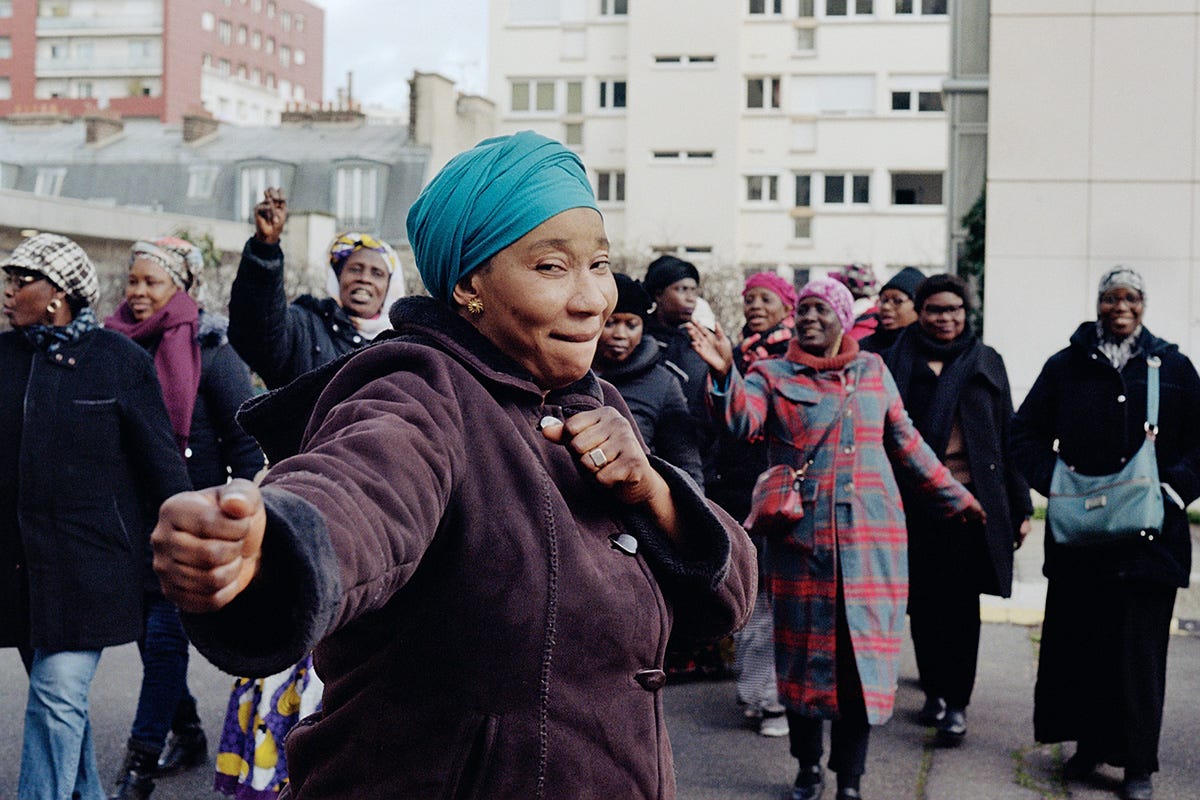
The final section of Hard Graft turns its attention to the work done in domestic settings. By this point of the journey, there is a building sense of unease that refuses to shift.
Why are women so often the primary victims of workplace and labour exploitation? Why does the prosperity of capitalist economies require the heaviest burden to be shouldered by the racialised other? We see triumphant photos of striking cleaners in France — most of whom are African women — who agitated for basic benefits and conditions in a story told and retold in industrialised economies around the world:
“Every day, in every urban center of the world, thousands of black and brown women, invisible, are “opening” the city. They clean the spaces necessary for neo-patriarchy, and neoliberal and finance capitalism to function. They are doing dangerous work: they inhale toxic chemical products and push or carry heavy loads. They have usually travelled long hours in the early morning or late at night, and their work is underpaid and considered to be unskilled. They are usually in their forties or fifties.” — Capitalocene, Waste, Race, and Gender
The nature of work taking place in domestic settings is riddled with contradictions. Equal parts close and distant; intimate yet excluded — the domestic worker, transplanted from far away nations. The distance between their presence and the outcome of their work means the message is signalled that it is only their labour that is wanted, not their personhood, not their family, not their culture.
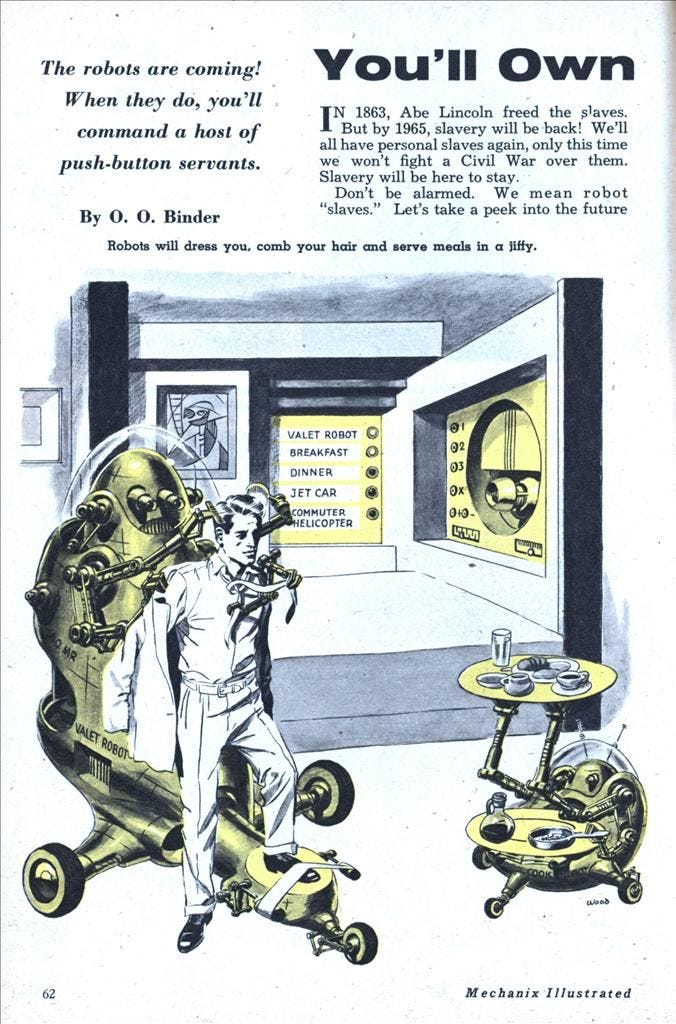
The domestic worker reminds us of the violence wrought — from enslavement to economic inequality resulting in geographic displacement. I am reminded of what Professor Ruha Benjamin writes in Race After Technology (Polity, 2019) as she analyses the rationale for where automation takes place. Robot is a word derived from Czech meaning “compulsory service” — reminding us that under this system of racial capitalism, the continuance of racialised domestic work, or rather, the worker, must be eliminated to achieve the dream of technological sophistication embodied by robotic servitude.
“Without the work of women of color, which is necessary but must remain invisible — literally and in valuative terms — neoliberal and patriarchal capitalism would not function.” — Capitalocene, Waste, Race, and Gender
Since the pandemic, professional services workers who were well-practised in commuting to an office, have been forced to confront the fact that their living space must also function as a place to work. In many corporate companies before 2019, to be allowed to work from home was an intermittent occurrence, often bestowed as a performative sign of management largesse towards their favourites. Since 2020, it has been normalised but not necessarily experienced equally.
London is a city that is emblematic of the problems that professional classes face in feeling at home in their dwellings. Early in 2020, the first edict from senior managers to Work From Home might have been received with private dread if a worker’s apartment lacked dedicated office space, or a table with an ergonomic chair, or a quiet area to allow participation in video calls. As the pandemic receded, some private landlords attempted to ban their tenants from using their rooms — their homes — as occasional workspaces.
“Viral justice, in the end, requires us not only to value people's labour, concretely, but also to profess our intrinsic value beyond what we produce, and to conspire together to transform the terms on which we work and rest.” — Viral Justice: How We Grow the World We Want, pg. 181
As I emerge from Hard Graft, many of the images, videos and displays are fixed in my mind’s eye. The exhibition gives an important historical grounding of how workplace exploitation has evolved through recent decades. The attention given to the bodily and psychological impacts of workers who are most marginalised presents us with a narrative we may not be used to hearing because the voices of street sweepers, sex workers, inmates and cleaners are persistently airbrushed out of the discourse about which workplaces need safeguarding and whose bodily rights need protecting.
The looming AI-mediated future promises to fix many workplace and economic problems — and this is where the lessons from Code Dependent and Hard Graft intersect. I want to keep our focus on every worker and every workplace — inside or outside. We should keep asking what work should mean — today and in an increasingly technologically mediated future.
Hard Graft: Work, Health and Rights is at The Wellcome Collection in London until Sunday 27 April 2025. Open Tuesday to Sunday each week, entry is free to all. Booking is not required, although at busy times there might be a queueing system in place. Designated days are also provided for relaxed (quiet) and “lights up” days. Check their accessibility page for more details.
Disclosure: I have not been paid nor have I received any other benefits from The Wellcome Collection to write this article. All opinions expressed in this essay are entirely my own.
Explore further
Visit
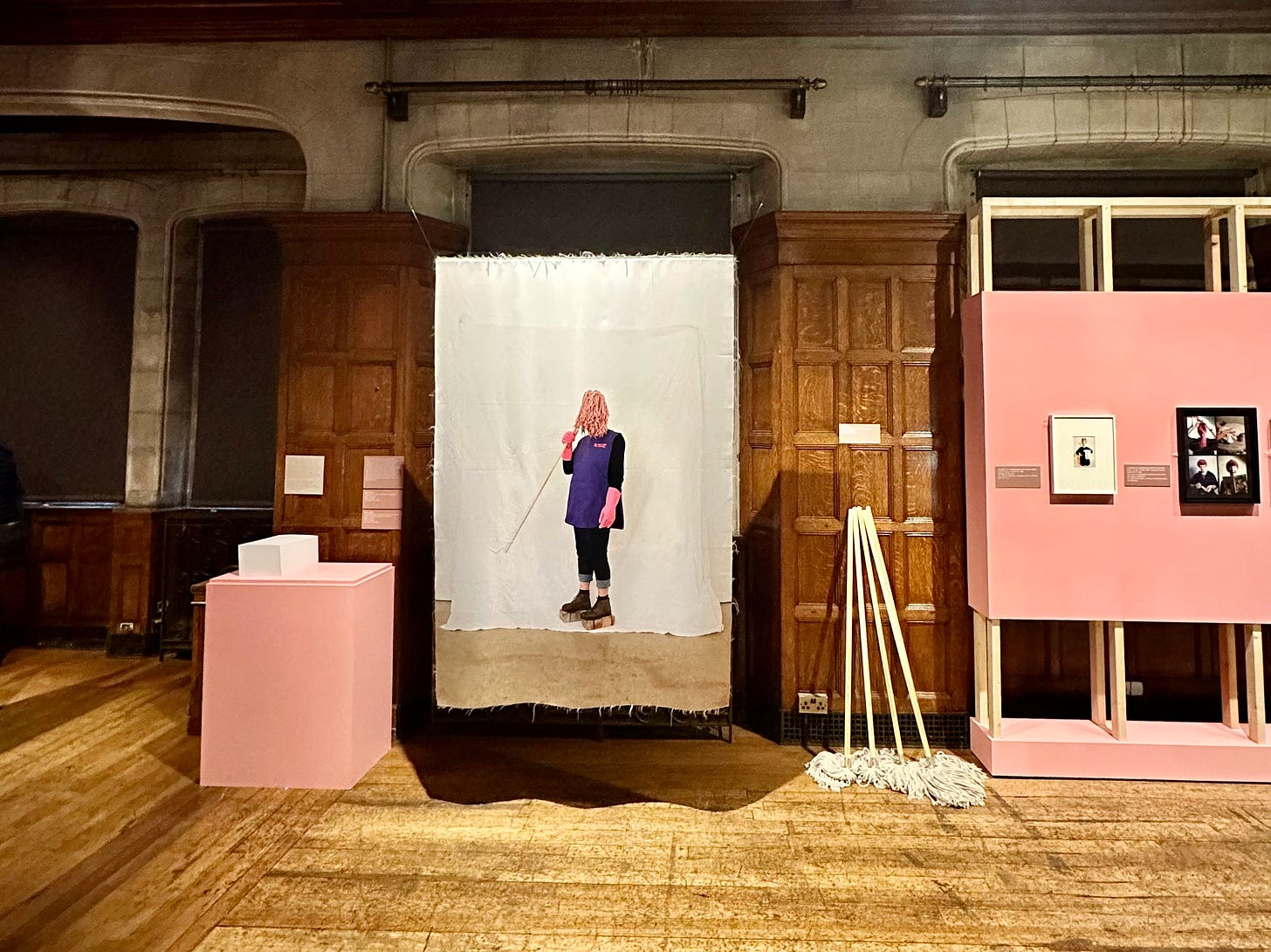
Lives Less Ordinary: Working-Class Britain Re-seen is a free exhibition at Two Temple Place that looks at the often overlooked contributions of working-class artists in Britain. The exhibition is on show until Friday 25 April 2025.
The Art World's Unpaid Tab by Lou Mensah over at Shade Art Review, tackles the stubborn expectation of many in the Arts world to expect freelancers and independents to work for free, and all that means for (in)accessibility. The timing of my newsletter means I just missed being able to promote Lou’s participation in a panel called Access to Work at Wellcome, just 2 days ago.
Listen
In SON[I]A #409: Imani Jacqueline Brown, Research Fellow at Forensic Architecture, discusses her contribution to the research that led to the production of If toxic air… Clear your schedule and immerse yourself in this extended monologue. The podcast can be streamed directly from MACBA’s website. Published 19 September 2024, lasting 1 hour 45 minutes.
Transcripts are available for Exploring Professionalism: Hair, Dress, and Code-Switching.
Read
The Automation Charade by Astra Taylor (LOGIC, 2018)
Lab Rats: Why Modern Work Makes People Miserable by Dan Lyons (Atlantic Books, 2018, 266 pages)
Capitalocene, Waste, Race, and Gender by Françoise Vergès (e-flux Journal, 2019)
Voices from the Valley: Tech Workers Talk About What They Do - and How They Do It edited by Ben Tarnoff (FSG Originals x LOGIC, 2020, 176 pages)
Choreography of Labor and Political Organizing in the Hotel Industry (The Funambulist, 2021)
Work Won't Love You Back: How Devotion to Our Jobs Keeps Us Exploited, Exhausted and Alone by Sarah Jaffe (C Hurst & Co Publishers, 2021, 296 pages)
Get Rich or Lie Trying: Ambition and Deceit in the New Influencer Economy by Symeon Brown (Atlantic Books, 2022, 248 pages)
Look Again: Visibility by Johny Pitts (Tate Publishing, 2022)
Racial platform capitalism: empire, migration and the making of Uber in London by Dalia Gebriel (from Environment and Planning A: Economy and Space, 2022)
These Prisoners Are Training AI by Morgan Meaker (WIRED, 2023)
Andrew Norman Wilson’s Workers Leaving the Googleplex (from MoMA, 2022)
Calls for investigation of Uber Eats and Deliveroo after raid on Bristol caravan camp by Tom Wall (The Guardian, 2024)
Cyberboss: The Rise of Algorithmic Management and the New Struggle for Control at Work by Craig Gent (Verso, 2024, 256 pages)
The young people sifting through the internet’s worst horrors by David Pilling (from FT Weekend Magazine, 2024)
The Commodification of Pleasure by Georgia Iacovou (Horrific/Terrific, 2025)
Unlikely bedfellows: How platform companies shortchange porn performers and ride-hailing drivers alike by Hannah Wohl and Lindsey Cameron (The Conversation, 2025)





Really enjoyed this Michael, so useful for those who can't make the exhibition. Grateful to be introduced to Sarah Ciston's amazing work and the podcasts, I'm going deep into your further listens! .......finishing with Mayfield was sublime 🥹